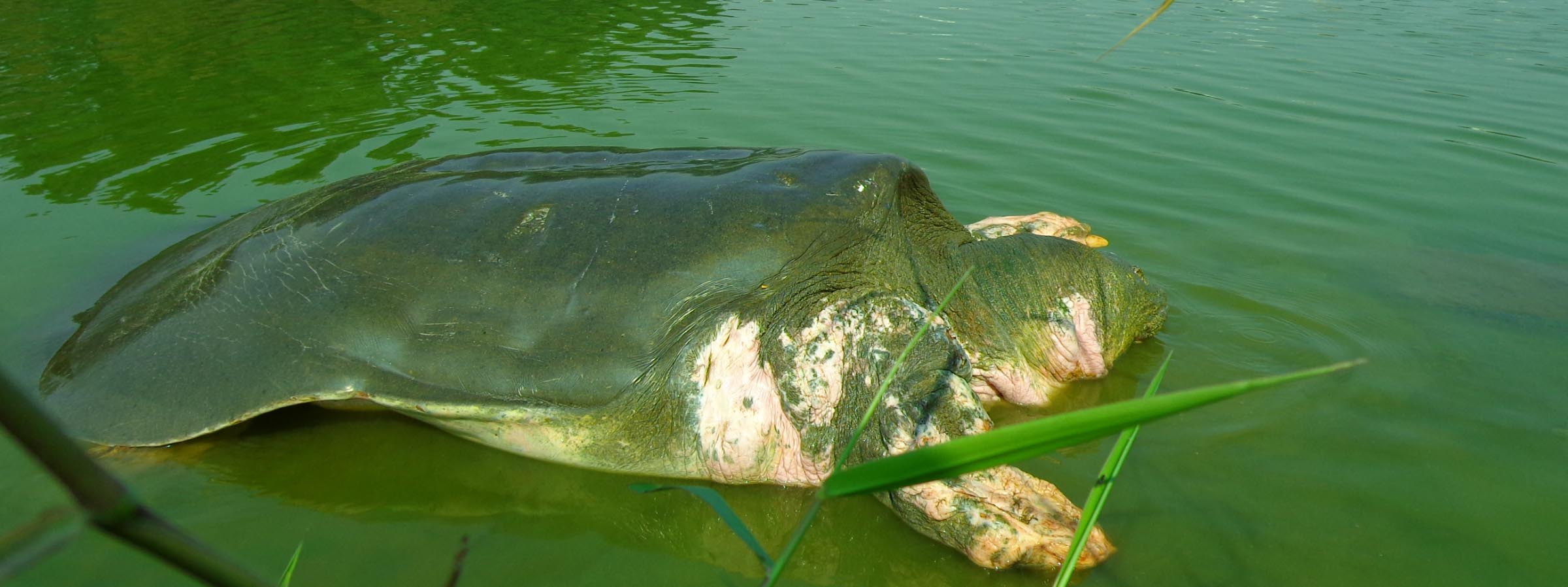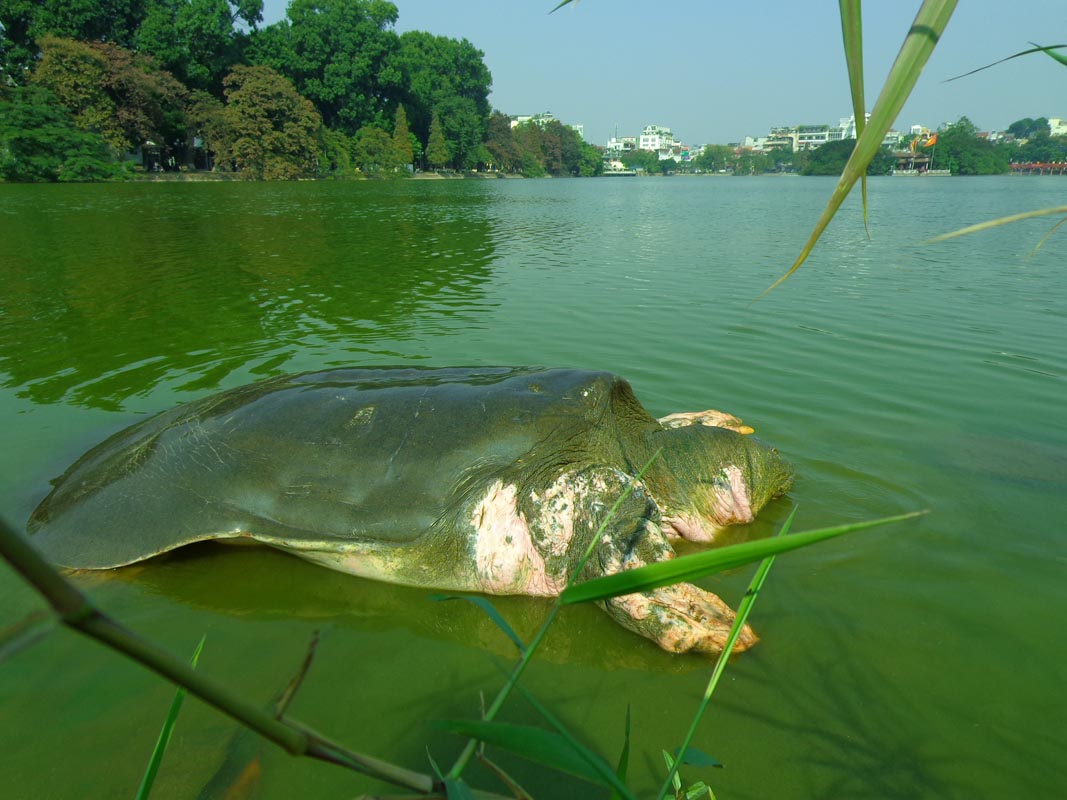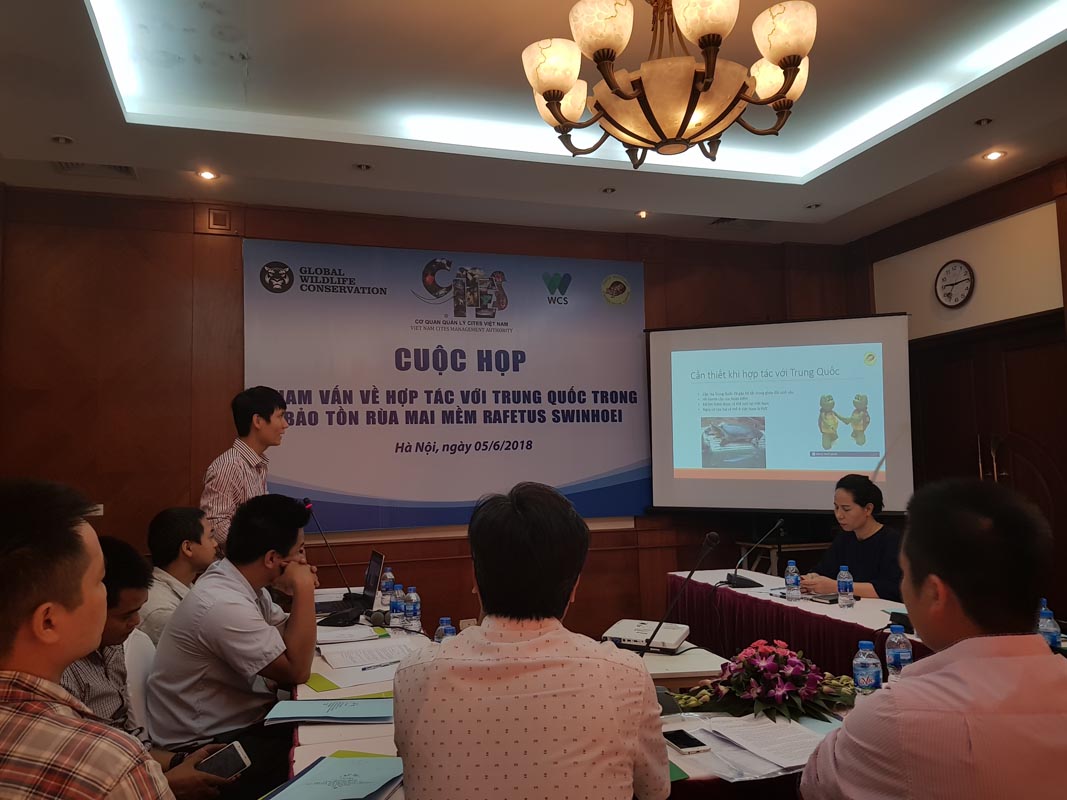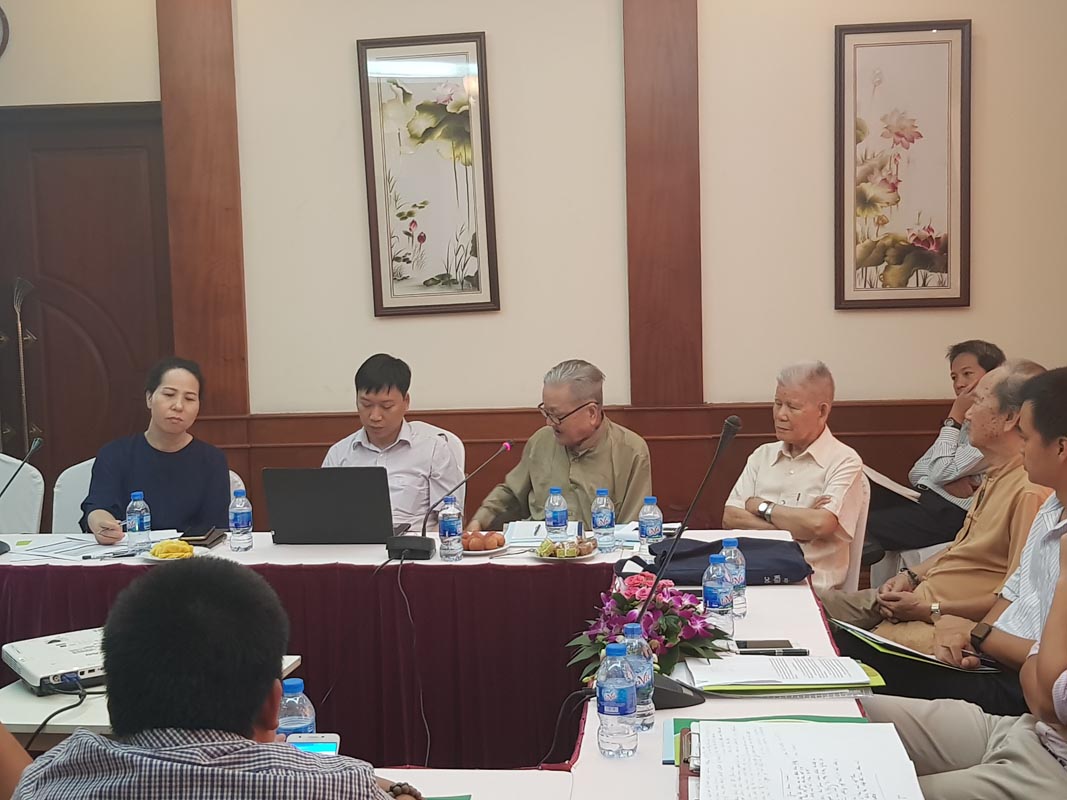
PROJECT Rafetus swinhoei
Swinhoe’s softshell turtle or Hoan Kiem turtle (Rafetus swinhoei) is one of largest softshell turtle in the world (up to 170kg). Thus, the large size is its drawback, it was targeted for over harvesting for local consumption in the period 1980-2000s. Today, there are only 3 individuals listed what is currently, according to IUCN, the rarest turtle species on the earth. A male is kept at the Suzhou zoo in China, a female lives in Dong Mo Lake and a last specimen in Xuan Khanh Lake, Hanoi capital, Vietnam.
In Vietnam, this turtle is considered as sacred due to the legend that King Le Loi, after defeating Ming dynasty (China) out of country, returned the magic sword to Water God (Lac Long Quan) by the turtle. Regarding this legend, there was a big individual of Rafetus swinhoei in Hoan Kiem Lake (Return sword lake) in old quarter of Hanoi capital, Vietnam, but sadly this animal died in January 2016.
In the face of the catastrophic decline suffered by R. swinhoei, it is imperative to find additional wild individuals; however, the large number of rivers and lakes in the historical distribution area of this species, the heavy economic constraints on local research, the suboptimal skills of the authorities involved, and the very scarce ecological information available on the study species (Van et al., 2020) have made it very difficult to uncover new potential areas of occurrence for this species. Thus, the use of local ecological knowledge, through interviews with fishers and/or experienced persons, represents an important tool to indirectly uncover new sites on presence for R. swinhoei.
Our studies produced some clear results that suggest further urgent actions are needed for turtle conservation. Indeed, although there is verbal evidence that a few R. swinhoei individuals still inhabit the two basins surveyed (possibly at several sites), there is no evidence that this species is still breeding in the wild. We urge the relevant authorities to conduct careful trapping expeditions at sites where R. swinhoei have been observed recently, and at historical sites where former turtle hunters continue to report a presence (Van et al., 2020), in order to evaluate whether this species remains in the region and, if so, its population status.
We also suggest that the availability of potential nesting sites (sandy beaches along the river banks) should be rigorously evaluated in order to assess indirectly the future perspectives of wild reproduction if a few animals still survive locally. This crucial information are essential for the best directions to be taken within the national conservation program for the species. They basically make it possible to estimate the interest of catching or not wild turtles for relocation (for example in captivity or semi-captivity if the nesting areas have completely disappeared), or if it would be better to create artificially sites suitable for nesting females in situ, among newly protected natural areas.
THE MISSION
Place : Hanoi, Vietnam
Species : Rafetus swinhoei
Mission : elaborate a capture method and financial support to organize a workshop about R. swinhoei preservation






